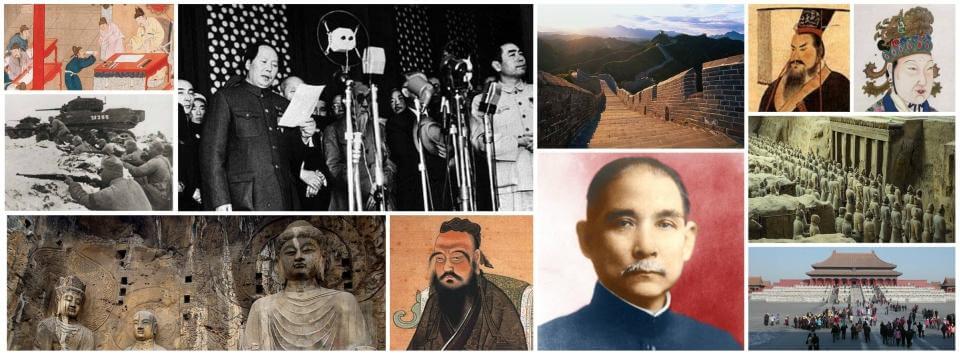
Nihewan Ruins and Museum
The information contained here are subject to change. Chinese History Digest is not responsible or liable if any changes should occur.
Opening Hours
9am - 5pm
closed on Monday and Friday
Entrance Ticket Prices
Free
Tickets only available until 3.30pm!
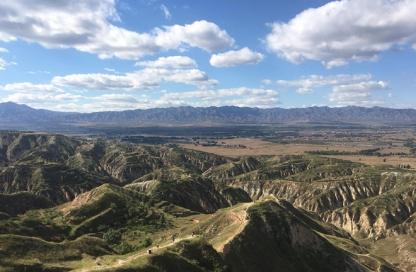 partial view of the Nihewan Basin as it is enclosed by mountainsThe Nihewan Ruins are 156 prehistoric relic sights that are spread out throughout the vast Nihewan Basin. Tens of thousands of the ancient relics that were unearthed from these sites are on display at the Nihewan Museum in Yangyuan. The Nihewan Basin is located in a mountainous region of Yangyuan County in Hebei province. It is more than 60 kilometers long from east to west and about 10 kilometers wide from north to south.
partial view of the Nihewan Basin as it is enclosed by mountainsThe Nihewan Ruins are 156 prehistoric relic sights that are spread out throughout the vast Nihewan Basin. Tens of thousands of the ancient relics that were unearthed from these sites are on display at the Nihewan Museum in Yangyuan. The Nihewan Basin is located in a mountainous region of Yangyuan County in Hebei province. It is more than 60 kilometers long from east to west and about 10 kilometers wide from north to south.
This area between the mountains had been a lake during the paleolithic period of prehistory until about 40,000 to 30,000 years ago. About 2 million years ago, this ancient lake covered a vast area of about 9,000 square kilometers. Occasionally, the lake flooded the settlements of our humanoid ancestors that lived along its shoreline. As the lake gradually dried up, it left behind a thick layer of sediment deposits.
During the past five decades, archeological excavations have already unearthed tens of thousands of ancient stone tools and animal fossils from these deposits. These excavations have yielded so many ancient stone artifacts from sediment deposits of different ages, that the scientific study of their evolving manufacturing methods has been greatly facilitated. It is believed that the most ancient of the discovered stone tools were made by Homo erectus but no fossils of this type of ancient hominid have been found in the basin so far. Archaic Homo sapiens fossils have been found though.
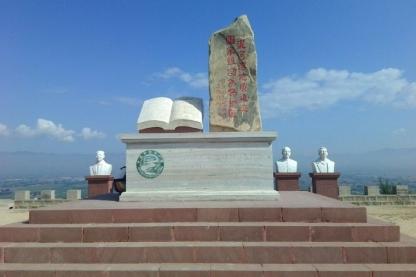 monument commemorating the leading archeologists that researched the Nihewan Ruins sitesThe Nihewan Museum (which is introduced in more detail further below on this page) has about 50,000 relics of various kinds on display and probably many more in storage. The various archeological sites within the basin where prehistoric relics were found are collectively known as the Nihewan Ruins. A total of 156 such prehistoric relic sites have so far been discovered within the Nihewan Basin. The age of the sediment deposits at these known relic sights varies between 10,000 and almost 2 million years. It can be reasonably assumed that the total number of discovered Nihewan Ruins relic sights within the basin will continue to increase steadily due to ongoing scientific exploration.
monument commemorating the leading archeologists that researched the Nihewan Ruins sitesThe Nihewan Museum (which is introduced in more detail further below on this page) has about 50,000 relics of various kinds on display and probably many more in storage. The various archeological sites within the basin where prehistoric relics were found are collectively known as the Nihewan Ruins. A total of 156 such prehistoric relic sites have so far been discovered within the Nihewan Basin. The age of the sediment deposits at these known relic sights varies between 10,000 and almost 2 million years. It can be reasonably assumed that the total number of discovered Nihewan Ruins relic sights within the basin will continue to increase steadily due to ongoing scientific exploration.
Among the total number of already discovered Nihewan Ruins sites, 40 sites are estimated to be more than a million years old. Within the whole rest of China, there are only six other sites that fall into the same age category! Included among those six other million-year-old sights are the Xihoudu Site, Yuanmou Man Site and Lantian Man Sites which are also featured on this website. The Peking Man Site at Zhoukoudian near Beijing is however not nearly as old as these other sites, even though it is undoubtedly the most famous of all prehistoric sites in China!
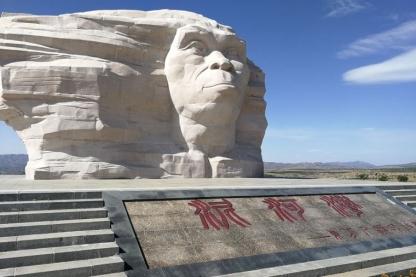 Peking Man monument at the Nihewan National Nature ReserveWhen one considers the number of discovered ancient relic sites in the Nihewan Basin, their ages and the number of relics that were unearthed, there is no other cradle of stone age evolution in China that can compare! Therefore, the Nihewan Basin's current lack of fame might at first seem puzzling. A lack of state funding for preservation efforts was perhaps the major reason for that in the past. That has thankfully changed during the last decade though. The entire area is now under state protection as the Nihewan National Nature Reserve and the government of Yangyuan county invested heavily to build an appropriate tourist infrastructure during the last decade in the hopes of attracting more and more visitors from China and abroad to the area. The construction of the modern Nihewan Museum was perhaps the costliest of these investments. Many new hotels were built as well and many more can be expected to be built within the near future as this former poor backwater tries to improve its economic future.
Peking Man monument at the Nihewan National Nature ReserveWhen one considers the number of discovered ancient relic sites in the Nihewan Basin, their ages and the number of relics that were unearthed, there is no other cradle of stone age evolution in China that can compare! Therefore, the Nihewan Basin's current lack of fame might at first seem puzzling. A lack of state funding for preservation efforts was perhaps the major reason for that in the past. That has thankfully changed during the last decade though. The entire area is now under state protection as the Nihewan National Nature Reserve and the government of Yangyuan county invested heavily to build an appropriate tourist infrastructure during the last decade in the hopes of attracting more and more visitors from China and abroad to the area. The construction of the modern Nihewan Museum was perhaps the costliest of these investments. Many new hotels were built as well and many more can be expected to be built within the near future as this former poor backwater tries to improve its economic future.
The local government hopes that ongoing archeological excavations in the Nihewan Basin will eventually uncover human fossils that are older than those that were previously discovered at other sites in China (such as the 1.64-million-years-old teeth that were unearthed at the Yuanmou Man Site in Yunnan province). Furthermore, it is not outside of the realm of possibility that at least one Nihewan Ruins site (perhaps a site that has not yet been discovered) will eventually yield fossils of ancient ape-like humans that are older than any others that were ever found outside of Africa!
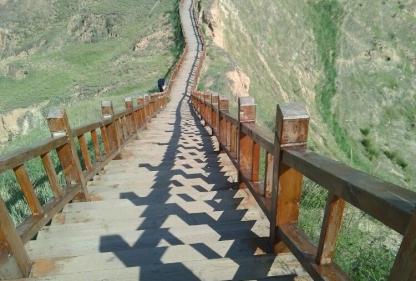 elevated wooden walkway leading around the Nihewan National Nature ReserveAs of today, that distinction is held by the skeletal remains that were discovered at Dmanisi in the Republic of Georgia. The fossils that were discovered there are estimated to be about 1.81 million years old. Prehistoric relic sites that are much older than that have already been discovered in China, both within the Nihewan Basin like the Heitugou Site and in other parts of China like the Xihoudu Site and the Shangchen Site. Archeological excavations at these sites have not yet yielded any human fossils though.
elevated wooden walkway leading around the Nihewan National Nature ReserveAs of today, that distinction is held by the skeletal remains that were discovered at Dmanisi in the Republic of Georgia. The fossils that were discovered there are estimated to be about 1.81 million years old. Prehistoric relic sites that are much older than that have already been discovered in China, both within the Nihewan Basin like the Heitugou Site and in other parts of China like the Xihoudu Site and the Shangchen Site. Archeological excavations at these sites have not yet yielded any human fossils though.
The geologist George Brown Barbour was the first to recognize the ancient sediments in the Nihewan Basin as a potential treasure trove of prehistoric relic sights. Following his inspection of the basin in 1923, he invited Emile Licent and Pierre Teilhard de Chardin for a visit. These two renowned prehistoric archaeologists then determined that the ancient sediments in the basin were more than a million years old. The latter of these two Frenchmen also discovered an ancient flint tool at the site by chance in 1935. Even though there was some doubt regarding the non-natural origin of that tool, it was regarded as the world's oldest stone tool back then.
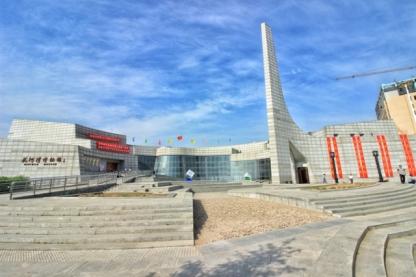 view of the modern facade of the Nihewan Museum in YangyuanSince its discovery in 1978, the Xiaochangliang Site has been considered as the archeological site with the oldest sediment deposits within the basin. It is therefore arguably the most famous of all the different Nihewan Ruins sites. The site was magnetostratigraphically dated to be 1.36 million years old and its multi-phase excavation has so far yielded about 3,000 ancient stone artifacts. Included among these ancient stone tools were scrapers, notches, burins and disc cores. Some ancient bone tools were found at the Xiaochangliang Site as well.
view of the modern facade of the Nihewan Museum in YangyuanSince its discovery in 1978, the Xiaochangliang Site has been considered as the archeological site with the oldest sediment deposits within the basin. It is therefore arguably the most famous of all the different Nihewan Ruins sites. The site was magnetostratigraphically dated to be 1.36 million years old and its multi-phase excavation has so far yielded about 3,000 ancient stone artifacts. Included among these ancient stone tools were scrapers, notches, burins and disc cores. Some ancient bone tools were found at the Xiaochangliang Site as well.
In 1981, the Chinese paleontologist Wei Qi discovered the around 1.1-million-year-old Donggutuo Site northwest of the Donggutuo village where a large number of stone tools have since been found as well. For many years, the oldest identified Nihewan Ruins site in the basin was the Goudi Site which is also known as Majuangou III or MJGIII. It has been estimated to be about 1.66 million years old and it has so far yielded hundreds of fossils of ancient fauna and numerous stone artifacts. The ancient stone tools that were discovered much more recently at the Heitugou Site are far older though, perhaps even close to 2 million years old! However, there is still some dispute within the scientific community about the non-natural origin of these ancient stone fragments. Many more important archeological sites in the basin are more than a million years old! However, it is not the purpose of this webpage to list them all.
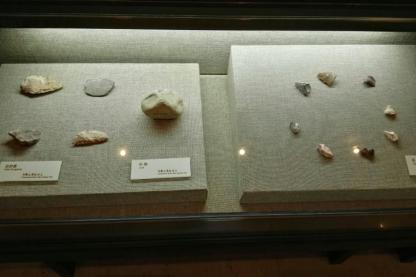 ancient stone tools on display at the Nihewan MuseumIn order to protect the Nihewan Ruins sites, the government has put the area where most of them are located under special protection as the Nihewan National Nature Reserve. The majority of the most significant Nihewan Ruins sites are located in the area between the Guanting, Donggutuo and Datianwa villages in the south and the path of the Sanggan River to the north. (A map on page 3 of this pdf has the archeological sites in this area marked.) Driving the roughly 138 kilometers from this area to Datong (Shanxi province), the nearest major city, typically takes less than 2 hours. Whereas hundreds of thousands of tourists visit the world-famous Yungang Grottoes near that large city every year, the Nihewan Basin was for a long time almost exclusively visited by paleoanthropologists. During the last decade, the local government has however already invested millions of yuan to improve the accessibility and sightseeing appeal of the Nihewan National Nature Reserve.
ancient stone tools on display at the Nihewan MuseumIn order to protect the Nihewan Ruins sites, the government has put the area where most of them are located under special protection as the Nihewan National Nature Reserve. The majority of the most significant Nihewan Ruins sites are located in the area between the Guanting, Donggutuo and Datianwa villages in the south and the path of the Sanggan River to the north. (A map on page 3 of this pdf has the archeological sites in this area marked.) Driving the roughly 138 kilometers from this area to Datong (Shanxi province), the nearest major city, typically takes less than 2 hours. Whereas hundreds of thousands of tourists visit the world-famous Yungang Grottoes near that large city every year, the Nihewan Basin was for a long time almost exclusively visited by paleoanthropologists. During the last decade, the local government has however already invested millions of yuan to improve the accessibility and sightseeing appeal of the Nihewan National Nature Reserve.
So what is there for tourists to see at the Nihewan National Nature Reserve? The reserve's distinctive mountain scenery has been made more accessible for tourists through the construction of a wooden plank road. It is now possible to walk on these wooden steps from the mountainous area with its scenic views all the way to the bottom of the valley. By being obliged to stay on the wooden path that is elevated above the soil level, tourists are prevented from causing damage to the potentially artifact-laden sediment layers below.
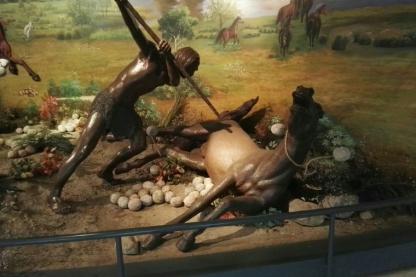 model exhibit of a prehistoric hunt at the Nihewan MuseumA few monuments have also been erected in the area by the local government. The largest of them is a stone bust of Peking Man's face near the main entrance to the reserve. Nearby, you will also see small busts of the four pioneer archeologists whose excavation work put the Nihewan Basin on the map of science. These were the three already mentioned foreign archeologists George Brown Barbour, Emile Licent and Pierre Teilhard de Chardin as well as the "Father of Chinese Vertebrate Paleontology" Yang Zhongjian (a.k.a. C.C. Young).
model exhibit of a prehistoric hunt at the Nihewan MuseumA few monuments have also been erected in the area by the local government. The largest of them is a stone bust of Peking Man's face near the main entrance to the reserve. Nearby, you will also see small busts of the four pioneer archeologists whose excavation work put the Nihewan Basin on the map of science. These were the three already mentioned foreign archeologists George Brown Barbour, Emile Licent and Pierre Teilhard de Chardin as well as the "Father of Chinese Vertebrate Paleontology" Yang Zhongjian (a.k.a. C.C. Young).
For many decades, all the fossils, stone tools and other relics that were unearthed from the various archeological Nihewan Ruins sites didn't have a proper place to be showcased to the public. Thankfully, that all changed in October 2010 when the modern Nihewan Museum was finally opened after a fairly long construction period. The museum is located in Yangyuan (Chinese: 阳原县 Yáng yuán xiàn). Since it is located near the center of that small municipality, it is fairly easy to find. A drive from here to Datong just takes about an hour but staying overnight in Yangyuan would also be a suitable option, especially since the 2018 opening of the 4-star Yangyuan International Hotel (which is reviewed further below on this page) which is located within walking distance of the Nihewan Museum. Travelers that plan to visit the Nihewan Ruins and the Nihewan Museum on the same day are advised to visit the museum first in the early morning. That is because the museum not only closes fairly early in the afternoon but also closes for some time every day around lunchtime (it is closed on Monday and Friday as well)!
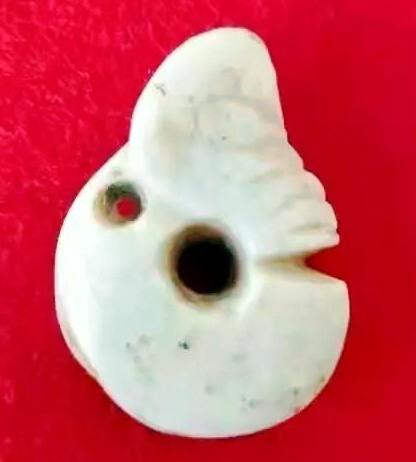 the famous Nihewan jade pig dragon that is on display at the museumA thorough visit of the Nihewan Museum can easily take 2 hours or more though. After all, it is the biggest museum in all of China that is dedicated to exhibiting relics from the stone age (the paleolithic period of prehistory). In addition to the museum's large reception hall, there are five exhibit halls (including one temporary hall) that altogether cover a floor area of 2,145 square meters. More than 50,000 relics that were unearthed from the various sites within the Nihewan Basin are on display.
the famous Nihewan jade pig dragon that is on display at the museumA thorough visit of the Nihewan Museum can easily take 2 hours or more though. After all, it is the biggest museum in all of China that is dedicated to exhibiting relics from the stone age (the paleolithic period of prehistory). In addition to the museum's large reception hall, there are five exhibit halls (including one temporary hall) that altogether cover a floor area of 2,145 square meters. More than 50,000 relics that were unearthed from the various sites within the Nihewan Basin are on display.
Included among the exhibits are fossils of prehistoric animals and our ancient hominid ancestors, stone tools (some of which are more than a million years old!), drawings and sculptures. Additionally, you will see life-sized models that recreate scenes from the challenging lives of our human ancestors that once roamed this area. Interactive elements that teach for example how to build a fire and create stone tools make many of the Nihewan Museum's exhibits interesting for children as well. Adults might be more impressed when seeing the oldest pottery fragment that was ever found in northern China.
Even though this piece of prehistoric pottery is more than 11,000 years old, it is a roughly 5,000-year-old jade pig dragon that undoubtedly is the Nihewan Museum's most famous exhibit. It was found during excavations of ancient tombs at the Jiangjialiang Site. This archeological site is located in the middle of the Nihewan Basin to the east of the village of Xishuidi. A total of nine 6,000-year-old houses and 117 ancient tombs were excavated at this site in 1995. The jade pig dragon was found in a tomb that belonged to a female. It is presumed that this female once wore this valuable piece of jade as a necklace pendant.
A pig dragon (zhūlóng in Chinese) is a jade artifact that has the head of a pig and the coiled-up body of a snake. These small but valuable artifacts have often been found in tombs that date back to the neolithic Hongshan culture in China's northeastern regions. The Nihewan jade pig dragon is an example for the earliest form of depiction of a Chinese dragon.
After having visited the Nihewan Ruins and the Nihewan Museum, it is highly recommended to spend a few more days in Datong in order to visit the world-famous Yungang Grottoes which are also featured on this website. These Buddhist caves are located about 16km west of the city of Datong where the blue icon appears on the left side of the large Google map below.
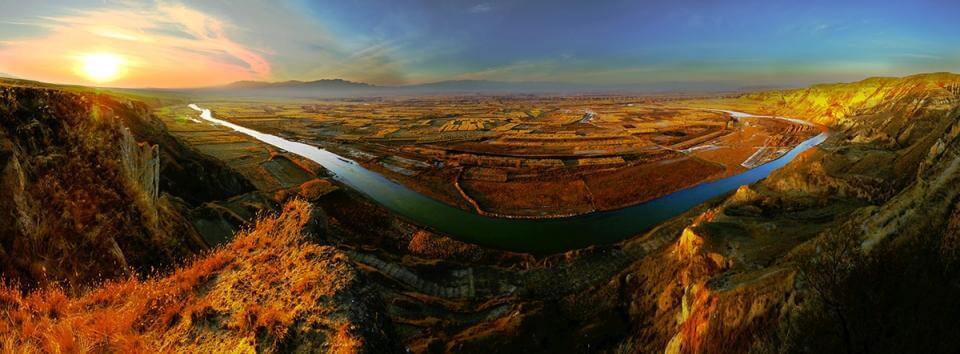 panoramic view of a section of the Nihewan National Nature Reserve and the Sanggan River
panoramic view of a section of the Nihewan National Nature Reserve and the Sanggan River
How to get to the Nihewan Museum?
| Address: | Nihewan Museum, No.4 Xining Road, Yangyuan County, Zhangjiakou City, Hebei province, China |
| Tel.Nr.: | +86 313 7695443 |
| Airport: | Datong Yungang Airport (DAT) |
| Train Station: | Tianzhen Railway Station, Datong South Railway Station (Datongnan), Datong Railway Station |
At the center of the following Google map, you can see the location of the Nihewan Museum (the blue icon) and the Yangyuan International Hotel (the yellow hotel bed icon) in the municipality of Yangyuan. The blue icon to the right of the center shows the location of the most important Nihewan Ruins in Yangyuan County. Left of the center, you can see the location of the Yungang Grottoes near Datong and the Weidu International Hotel in Datong's city center. Further below on this page, you can read a review of the services and amenities of both hotels. In case you are planning a trip to China, you could support this website by using the provided affiliate links to check prices and book your hotel accommodation!
You can book hotels in China with both of our affiliate partners Agoda and Trip.com. No matter whether you choose Agoda or Trip.com, you will find many offers on each of these platforms that will allow you to make a risk-free booking with the possibility of free cancellation until a clearly stated date and time, sometimes as late as the intended date of arrival. However, some deals require prepayment and don't permit cancellation without fees. In that case, the incurred cancellation fees are clearly stated.
When following an Agoda link, the search results will show you prices, availability and special offers for your chosen dates with the recommended hotel in the top search position as well as for other hotels in the same area. Links to Trip.com will take you to the specific hotel webpage where you can then search for availability, prices and special deals with your chosen dates.
The provided information was thoroughly researched from various hotel booking websites. Chinese History Digest is not responsible if any information regarding the provided services and amenities might have changed.
Recommended Hotel near the Nihewan Museum
The 4-star Yangyuan International Hotel that is reviewed in detail below is located in the municipality of Yangyuan (Chinese: 阳原县 Yáng yuán xiàn). It is just a 10-minute walk away from the Nihewan Museum there. In fact, the hotel and museum are both located on Xining Road less than 1km away from each other. The hotel can be booked on Trip.com but not on Agoda.
Yangyuan International Hotel
 The Yangyuan International Hotel is a 4-star hotel that is located only about 1km away from the center of Yangyuan. It is undisputedly the best hotel in that municipality since its fairly recent opening in 2018. Most tourists that travel to Yangyuan come by car and there is ample free parking available outside the Yangyuan International Hotel. However, staying at this hotel is also feasible for travelers that don't have access to a car. That is because the hotel not only provides free pickup (between 8 am and 10 pm) from the nearest airport in Datong but even from the Tianzhen Railway Station and the nearest long-distance bus station in Yangyuan. Taking the high-speed train from the Datong South Railway Station to the Tianzhen Railway Station only takes about 30 minutes. The 47km shuttle bus ride from there to the hotel then typically takes about an hour. Whereas the Nihewan Museum can be easily reached on foot within minutes from the hotel, other tourist sights in the vicinity of the Yangyuan municipality are best reached by taxi. The hotel provides a convenient taxi booking service and the taxi fares in this less-developed part of China are generally quite cheap.
The Yangyuan International Hotel is a 4-star hotel that is located only about 1km away from the center of Yangyuan. It is undisputedly the best hotel in that municipality since its fairly recent opening in 2018. Most tourists that travel to Yangyuan come by car and there is ample free parking available outside the Yangyuan International Hotel. However, staying at this hotel is also feasible for travelers that don't have access to a car. That is because the hotel not only provides free pickup (between 8 am and 10 pm) from the nearest airport in Datong but even from the Tianzhen Railway Station and the nearest long-distance bus station in Yangyuan. Taking the high-speed train from the Datong South Railway Station to the Tianzhen Railway Station only takes about 30 minutes. The 47km shuttle bus ride from there to the hotel then typically takes about an hour. Whereas the Nihewan Museum can be easily reached on foot within minutes from the hotel, other tourist sights in the vicinity of the Yangyuan municipality are best reached by taxi. The hotel provides a convenient taxi booking service and the taxi fares in this less-developed part of China are generally quite cheap.
The Yangyuan International Hotel has a total of 118 rooms (including suites). All rooms are air-conditioned and equipped with a refrigerator, minibar, in-room safe and LCD TV with cable channels. Free Wi-Fi is available and free bottled water and instant coffee are provided in the rooms. Laundry service and free luggage storage are available at this hotel but smoking is only allowed in a designated smoking area. The hotel's Chinese and Western-style buffet breakfast is already included in most room rates but can also be purchased separately for only 38 yuan per person. In addition to an on-site restaurant, there is also a teahouse and a bar on the premises of this hotel. For relaxation, the Yangyuan International Hotel also has a game room where hotel guests can play mahjong, chess or poker.
0.5 miles away from the Nihewan Museum
Check availability & prices!Recommended Hotel in Datong
Travelers that plan to visit the Nihewan Ruins and/or Nihewan Museum on a day trip by car from Datong are recommended to stay at the 5-star Weidu International Hotel which is located at the city center of that larger city. In addition to the links to Agoda that are used in the review below, this luxurious hotel is also available for booking on Trip.com by following this link.
Weidu International Hotel
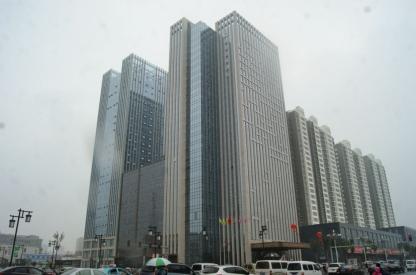 The Weidu International Hotel is a 5-star business hotel in Datong. It is located in a very safe and modern area just opposite the municipal government building. The city center is just a few hundred meters away from this popular hotel. The Datong Yungang Airport can be reached within 30 minutes and the hotel can arrange airport transfer upon request (for an additional fee). Taking a taxi from the hotel to the Datong South Railway Station (Datongnan) should take about 25 minutes. The main location-related advantage of the Weidu International Hotel is that it is very close to a shopping mall as well as to some of the city's tourist attractions. Included among those nearby attractions are the Buddhist Shanhua Temple and Huayan Monastery, the Confucian Temple, Datong's city walls and the Nine-Dragon Wall which are all within walking distance of the hotel.
The Weidu International Hotel is a 5-star business hotel in Datong. It is located in a very safe and modern area just opposite the municipal government building. The city center is just a few hundred meters away from this popular hotel. The Datong Yungang Airport can be reached within 30 minutes and the hotel can arrange airport transfer upon request (for an additional fee). Taking a taxi from the hotel to the Datong South Railway Station (Datongnan) should take about 25 minutes. The main location-related advantage of the Weidu International Hotel is that it is very close to a shopping mall as well as to some of the city's tourist attractions. Included among those nearby attractions are the Buddhist Shanhua Temple and Huayan Monastery, the Confucian Temple, Datong's city walls and the Nine-Dragon Wall which are all within walking distance of the hotel.
The rooms of the Weidu International Hotel are heated and air-conditioned. Non-smoking rooms are available upon request and the hotel also has family rooms. Free Wi-Fi is provided in public areas. Dry cleaning and luggage storage are available. Free buffet breakfast is included in the room rate. The hotel has a Chinese and Western restaurant as well as a tea/coffee house on its premises. For exercise, guests have access to an indoor swimming pool and a fitness center. There is also a game room for playing table tennis and billiards. After a busy day, guests can relax at the hotel's sauna, spa, steam room, have a massage or sing karaoke.
53.9 miles away from the Nihewan Museum
Check availability & prices!
